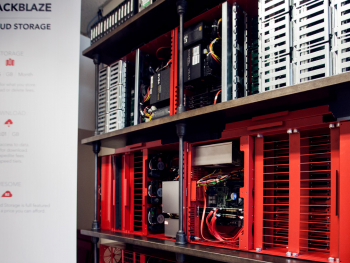- I've been using backblaze for a while now and it's great expect for one thing. The date format. I live in Australia. The date format here is one that makes sense, day/month/year. Every time I look at the last backup date on backblaze I am confused as to why the last.
- Similar projects and alternatives to backblaze-personal-wine-docker based on common topics and language mini-docker-rust. 0 100 0.0 Dockerfile Very small rust docker image. 0 89 4.6 Dockerfile Docker Backup various DB Services with customizable options based on Alpine.
Download adobe xd for mac torrent. First, you have to create a Backblaze account and enable B2. If you already have a Backblaze account, login, visit 'My Settings' and enable 'B2 Cloud Storage' on your account under 'Enabled Products' Second, create an Private bucket in your B2 account. Third, retrieve your Master Application Key and KeyID. Backblaze offers a $6 per month unlimited personal backup service but it only works on Windows and Mac – no love for Linux. Even if they showed love for Linux with that backup service, it would likely have a desktop client which would require a full desktop environment consistent with their other operating system offerings.
Introduction
Backblaze B2 Cloud Storage is an S3-compatible cloud storage provider. At ¼ the price of AWS S3, Backblaze is a cost-effective option to store and manage data at scale.
You can learn more about Backblaze B2 Storage here.
Koyeb is a serverless to securely add the keyID you previously created.
bbaccesskey) and enter the keyID you previously saved as the Valuebbprivatekey) and enter the private applicationKey you previously saved as Valuebb-bucket-koyebYou have just successfully created a Koyeb Store that mirrors the content of your Backblaze B2 bucket. Koyeb natively provides an S3-compatible API to let you interact with your Store using the S3 protocol to upload and manage your content.
Note: To trigger a function when an event occurs in your Backblaze bucket, you need to use the Koyeb endpoint to upload your content instead of the Backblaze one.
Create a Stack and Deploy the Watermark Function
Once your Store configuration is done, you can create a Stack and deploy the function to generate a watermark each time a new image is uploaded to your Backblaze B2 bucket. Adobe-cc-download-direct-links-mac.
Look at the top navigation bar, click the Create button, and select Stack.
You land on the Stack creation page. A Stack is a Koyeb resource used to implement data-processing logic. A Stack is composed of two core elements:

- Event bus: To receive events from a Store or different sources
- Functions: Python, Node.js, Docker containers, or ready-to-use catalog apps triggered on specific events
From the Stack creation view, click the Simple Koyeb Versioning button. This mode allows you to directly manage your Stack via the control panel and API instead of GitHub.
Give your Stack a name, for example: bb-watermark-image. Then click the Create Stack button.
You are now prompted to create a new Stack revision. Stack revisions allow you to version your changes, so you can rollback to a previous version in seconds and track your changes.
In the catalog function inputs, search for Watermark image and select this function.
A snippet appears. Replace the configuration variables with your settings.
In this example configuration, the watermark-image@1.0.1 catalog function generates a watermark that:
- Is 10% the size of the image that the watermark is placed on
- Has a margin of 5 pixels
The generated watermarked image is stored in the watermark-images/ folder of the bb-bucket-koyeb and is saved in the JPEG format.
When you are ready, write a revision message and click Deploy Revision.
This function will be triggered each time an image is uploaded to your Backblaze Store via the Koyeb S3-Compatible API.
Upload Images to the Bucket and View Results
It's now time to upload some images to your Store and see what happens.
On the Koyeb Control Panel, click Stores and select the Store you previously created, i.e. bb-bucket-koyeb.
Click the Upload button and upload some images. In a few seconds, a folder watermark-images/ will appear. For each image uploaded, you will receive a watermarked version of that image in this folder.
Backblaze Docker Tutorial
In the folder watermark-images/, you should see your new file. Hover over the new file, and click Copy to copy the URL that appears. Enter this URL into a new tab to access and view your watermarked image.
An example image watermarked with the function:
Conclusion
In this guide, you saw how to implement a processing function to generate a watermarked image for each image uploaded to a Koyeb Store that is connected to a Backblaze bucket.If you would like to follow this tutorial and use a different third-party cloud service provider than Backblaze B2, please read our documentation about how to connect a third-party store.
Backblaze Dockers
Feel free to reach out to us over our Community Slack or here to let us know if you have questions about this feature or would like to suggest a new feature.
